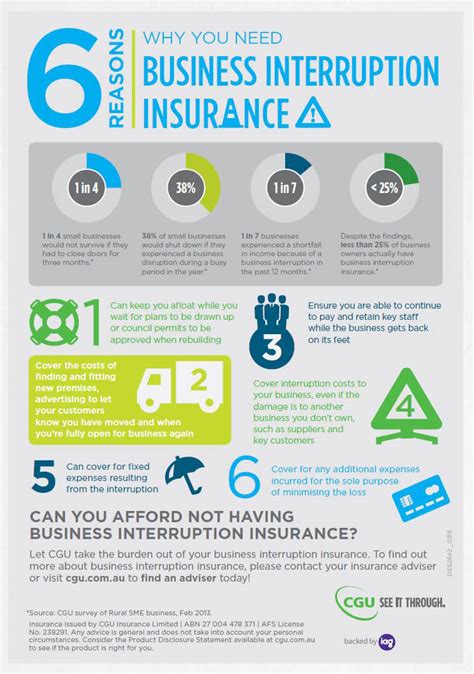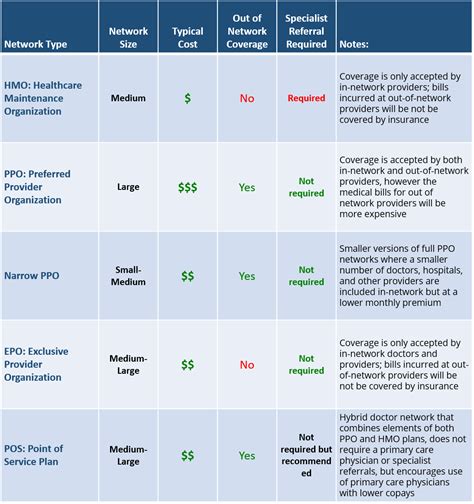Business Interruption Insurance Cost

Business interruption insurance, often referred to as business income insurance or simply interruption insurance, is a vital aspect of any comprehensive business risk management strategy. It provides financial protection for businesses facing unexpected interruptions or closures due to various covered perils, such as natural disasters, fires, or even pandemics. The cost of this insurance coverage is a critical consideration for businesses, as it directly impacts their financial planning and preparedness.
Understanding the factors that influence the cost of business interruption insurance is essential for business owners. This article aims to provide an in-depth analysis of these factors, offering insights into how businesses can navigate the complex world of insurance costs while ensuring they have adequate protection.
Understanding Business Interruption Insurance Costs

The cost of business interruption insurance is influenced by a myriad of factors, each playing a significant role in determining the premium a business will pay. These factors are often interrelated and can vary greatly depending on the specific circumstances and nature of the business.
1. Coverage Level and Limits
The level of coverage a business opts for is one of the primary determinants of the insurance cost. Business interruption insurance typically provides coverage for various expenses and losses, including:
- Revenue Replacement: This coverage ensures that the business can continue to pay its operating expenses and maintain its income stream during an interruption.
- Extra Expenses: It covers any additional expenses incurred as a result of the interruption, such as temporary relocation costs or increased marketing efforts to regain customers.
- Loss of Rents (for Commercial Property Owners): Provides coverage for the loss of rental income if a tenanted property is rendered uninhabitable due to a covered event.
The higher the coverage limits a business selects, the more comprehensive its protection, but also the higher the premium. Businesses must strike a balance between adequate coverage and affordability to ensure they are not underinsured in the event of a claim.
2. Business Type and Size
The nature and size of a business significantly impact the cost of its interruption insurance. Larger businesses with more complex operations and higher revenue streams generally face higher insurance costs. This is because the potential financial impact of an interruption is greater, and the business may require more extensive coverage to ensure continuity.
Additionally, certain industries are inherently riskier than others. For example, businesses in sectors prone to natural disasters, such as coastal areas susceptible to hurricanes or regions with high earthquake activity, will face higher insurance costs due to the increased likelihood of claims.
3. Location and Geographic Risks
The location of a business is a critical factor in determining its insurance costs. As mentioned, areas prone to natural disasters are associated with higher insurance premiums. This is because insurance companies factor in the historical frequency and severity of such events when calculating premiums.
For instance, a business located in a hurricane-prone region will pay a higher premium than one in a less risky area. Similarly, businesses in urban areas may face higher costs due to the increased risk of fires, theft, or civil unrest.
4. Historical Claims and Loss Experience
Insurance companies carefully analyze a business’s historical claims and loss experience when setting premiums. A business with a history of frequent or large claims is considered a higher risk and will likely face higher insurance costs. This is because past claims are often an indicator of future risk.
However, it’s important to note that a single large claim does not necessarily lead to an increase in premiums. Insurance companies typically look at a business’s overall loss experience over a period of time to assess its risk profile.
5. Deductibles and Policy Terms
The choice of deductibles and the policy term also influences the cost of business interruption insurance. A higher deductible, which is the amount a business agrees to pay out of pocket before the insurance coverage kicks in, can lead to lower premiums. This is because the business is assuming more financial responsibility in the event of a claim.
Similarly, the length of the policy term can impact costs. Longer policy terms often result in lower per-year premiums, providing some cost stability for businesses.
6. Additional Coverages and Endorsements
Businesses can customize their interruption insurance policies by adding additional coverages or endorsements. These can include coverage for specific perils (e.g., flood or earthquake), protection for dependent properties (if a business relies on another entity for supplies or services), or coverage for civil authority actions (if a civil authority prohibits access to a business location due to a covered event). While these additions enhance protection, they also increase the policy’s cost.
7. Insurance Provider and Market Conditions
The insurance company a business chooses to work with can also impact its premium. Different insurers have different risk appetites and pricing strategies. Shopping around and comparing quotes from multiple insurers can help businesses find the most competitive rates.
Market conditions also play a role. During periods of high demand for insurance coverage or after significant industry losses, insurers may increase premiums to manage their risk exposure.
Strategies for Managing Business Interruption Insurance Costs

While the cost of business interruption insurance is influenced by various factors beyond a business’s control, there are strategies that can help manage these costs effectively.
1. Comprehensive Risk Assessment
Conducting a thorough risk assessment is the first step in managing insurance costs. This involves identifying potential risks and hazards that could lead to business interruptions, such as natural disasters, technological failures, or supply chain disruptions. By understanding these risks, businesses can take proactive measures to mitigate them, which can reduce the likelihood of claims and lower insurance costs.
2. Loss Prevention and Control Measures
Implementing robust loss prevention and control measures can significantly reduce the risk of interruptions and, consequently, lower insurance costs. This could include investing in state-of-the-art security systems, fire suppression equipment, or even upgrading to more resilient building materials. By demonstrating a commitment to risk mitigation, businesses can often negotiate better insurance rates.
3. Business Continuity Planning
Developing a comprehensive business continuity plan is essential for minimizing the financial impact of interruptions. This plan should outline steps to maintain operations during and after a disruption, including backup systems, alternative locations, and strategies to maintain customer and supplier relationships. A well-prepared business continuity plan can make a business more resilient and may even lead to lower insurance premiums.
4. Claims Management
Effective claims management is critical to maintaining a positive relationship with insurance providers and controlling costs. Businesses should ensure they have a clear understanding of their policy terms and conditions and take steps to mitigate the severity of losses when possible. Promptly reporting claims and providing accurate, detailed information can help streamline the claims process and potentially lead to faster payouts.
5. Regular Policy Reviews
Insurance policies should be reviewed regularly to ensure they remain aligned with the business’s evolving needs and risk profile. As a business grows or its operations change, its insurance requirements may also change. Regular policy reviews can help identify gaps in coverage or opportunities to optimize costs without compromising protection.
6. Negotiation and Shopping Around
Insurance costs are not set in stone, and businesses should feel empowered to negotiate with their insurers. Highlighting risk mitigation efforts, loss control measures, and a strong claims history can strengthen a business’s position during negotiations. Additionally, shopping around for insurance quotes from different providers can provide valuable insights into the market and help businesses secure the most competitive rates.
Case Study: Impact of Business Interruption Insurance in a Real-World Scenario
To illustrate the importance and impact of business interruption insurance, let’s consider a hypothetical scenario involving a small business owner, Sarah, who runs a bakery in a coastal town frequently affected by hurricanes.
Scenario: Sarah’s Bakery
Sarah’s bakery has been a staple in her community for over a decade. However, the region is prone to hurricanes, and Sarah has experienced several close calls over the years. While her bakery has always been fortunate to avoid major damage, she understands the potential risk and the impact a significant interruption could have on her business.
Risk Assessment and Insurance Coverage
Recognizing the threat, Sarah conducted a thorough risk assessment and decided to invest in business interruption insurance. She chose a policy with coverage for hurricane-related damage, including the replacement of income and extra expenses incurred during the recovery period.
Premiums and Cost Management
Given the high risk of hurricanes in her area, Sarah’s premiums were relatively high. However, she took several steps to manage these costs. First, she implemented a range of loss prevention measures, including installing a state-of-the-art storm shutter system and upgrading her bakery’s electrical system to reduce the risk of fire.
Additionally, Sarah developed a detailed business continuity plan. This plan outlined procedures for securing the bakery before a hurricane, including the steps to protect her inventory and equipment. It also detailed alternative locations where she could temporarily operate if her primary bakery was damaged. By demonstrating these proactive measures, Sarah was able to negotiate a more favorable premium with her insurer.
The Impact of a Hurricane
Unfortunately, a category 3 hurricane made landfall in Sarah’s town, causing significant damage to many businesses, including her bakery. However, thanks to her storm shutters and the proactive measures she had taken, Sarah’s bakery sustained only minor damage, primarily to its signage and exterior paint.
Despite the relatively minor physical damage, the bakery was still unable to operate for several weeks due to the extent of the storm’s impact on the community. Sarah’s business interruption insurance policy kicked in, providing her with the financial support she needed to cover her operating expenses and maintain her employees’ salaries during this period.
Benefits of Business Interruption Insurance
Sarah’s experience highlights the critical role of business interruption insurance in protecting businesses during unforeseen interruptions. While her bakery was fortunate to avoid major physical damage, the inability to operate due to community-wide infrastructure issues could have been devastating without insurance coverage.
The financial support provided by her insurance policy allowed Sarah to maintain her business’s financial stability during the recovery period. It ensured she could pay her employees, keep her business’s reputation intact, and continue serving her community once the area had recovered from the storm.
The Future of Business Interruption Insurance
As the business landscape continues to evolve, so too will the nature of risks and the strategies used to manage them. The COVID-19 pandemic has highlighted the importance of business interruption insurance, particularly for risks that were previously considered uninsurable or were excluded from standard policies.
Expanding Coverage for Emerging Risks
In the wake of the pandemic, there has been a growing demand for insurance coverage for pandemics and other emerging risks. While some insurers have started offering pandemic coverage as an add-on or endorsement, the challenge lies in defining and pricing these risks accurately. As the insurance industry gains more data and experience with these emerging risks, we can expect to see more comprehensive coverage options become available.
The Role of Technology and Data Analytics
Advancements in technology and data analytics are also shaping the future of business interruption insurance. Insurers are leveraging big data and predictive analytics to better understand and manage risks. This includes using satellite imagery and weather data to assess and mitigate natural disaster risks and employing artificial intelligence to analyze business operations and suggest tailored risk mitigation strategies.
Furthermore, the increasing adoption of digital technologies by businesses is leading to the development of new insurance products. For example, cyber insurance policies are becoming more prevalent as businesses move more of their operations online, increasing their exposure to cyber risks.
The Importance of Adaptability and Flexibility
The future of business interruption insurance lies in its ability to adapt to changing risks and business needs. As businesses continue to evolve and face new challenges, insurance providers must remain agile and responsive. This includes offering customizable policies that can be tailored to the unique needs of each business and providing clear, concise policy language to ensure businesses understand their coverage.
Collaborative Risk Management
Finally, the future of business interruption insurance may involve a greater emphasis on collaborative risk management between insurers, businesses, and other stakeholders. This could include insurers working more closely with businesses to implement loss prevention measures, sharing data and best practices to enhance overall risk management, and developing innovative solutions to emerging risks through public-private partnerships.
Conclusion

Business interruption insurance is a critical component of any business’s risk management strategy, offering financial protection during unexpected interruptions. The cost of this insurance is influenced by a multitude of factors, including the level of coverage, business type and size, location, historical claims, deductibles, and additional coverages. While some of these factors are beyond a business’s control, there are strategies businesses can employ to manage these costs effectively, such as comprehensive risk assessments, loss prevention measures, business continuity planning, and regular policy reviews.
Looking ahead, the future of business interruption insurance is promising, with the potential for expanded coverage for emerging risks, increased use of technology and data analytics, and a greater focus on adaptability and collaborative risk management. As businesses navigate an ever-changing landscape of risks, insurance providers will play a crucial role in helping them mitigate these risks and ensure their long-term viability.
How often should I review my business interruption insurance policy?
+It is recommended to review your policy annually or whenever your business undergoes significant changes. This ensures that your coverage remains aligned with your current needs and risk profile.
Can I reduce my business interruption insurance costs by increasing my deductible?
+Yes, increasing your deductible can lead to lower premiums. However, it’s important to carefully consider your financial capabilities and ensure you can afford the higher deductible in the event of a claim.
What steps can I take to mitigate the risk of business interruptions?
+You can implement a range of loss prevention measures, such as installing advanced security systems, conducting regular maintenance on critical equipment, and developing a comprehensive business continuity plan. Additionally, staying informed about potential risks and hazards in your area can help you prepare and respond effectively.
Are there any tax benefits associated with business interruption insurance?
+Business interruption insurance premiums are typically tax-deductible as a business expense. However, it’s important to consult with a tax professional to understand the specific tax implications for your business.



